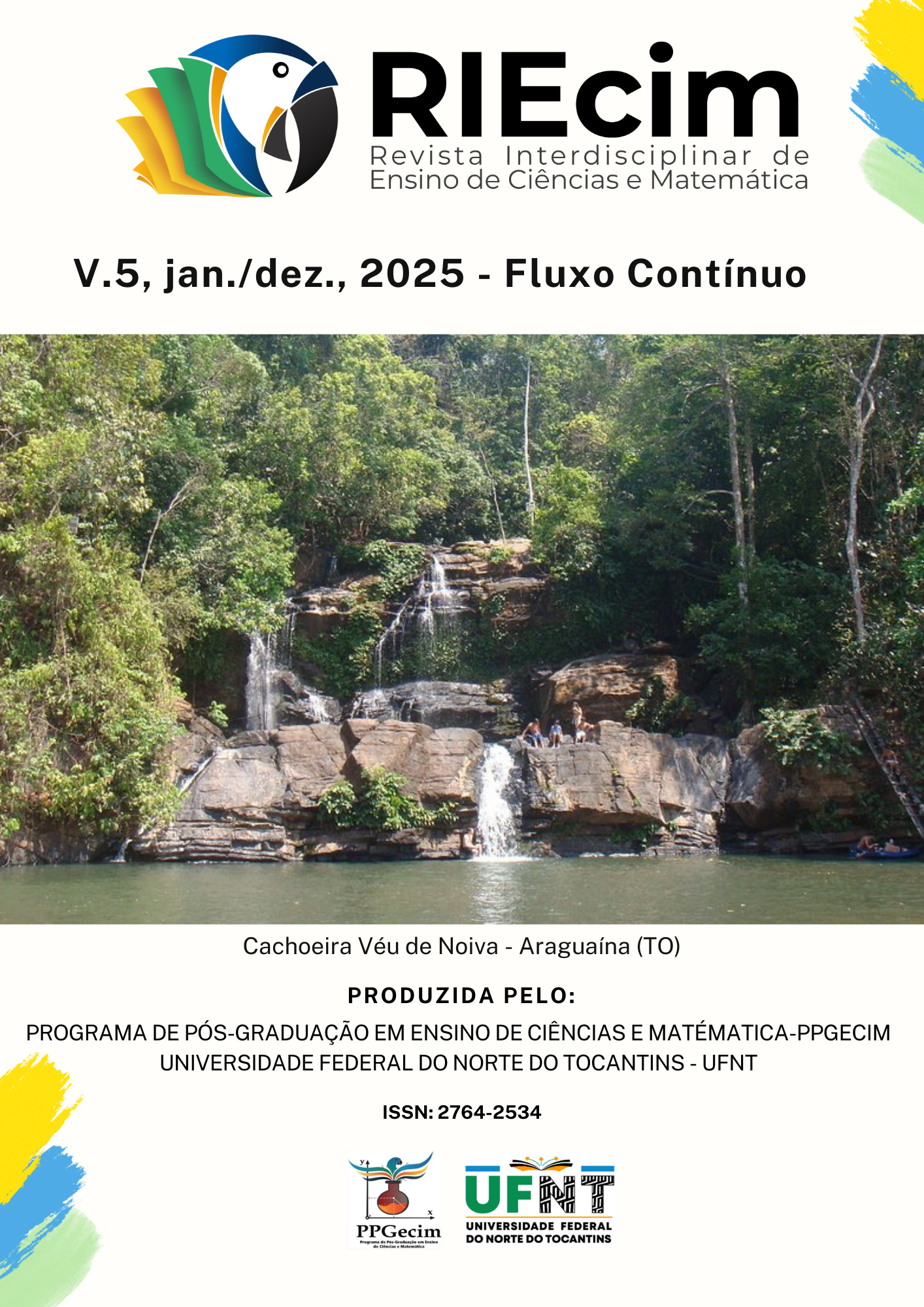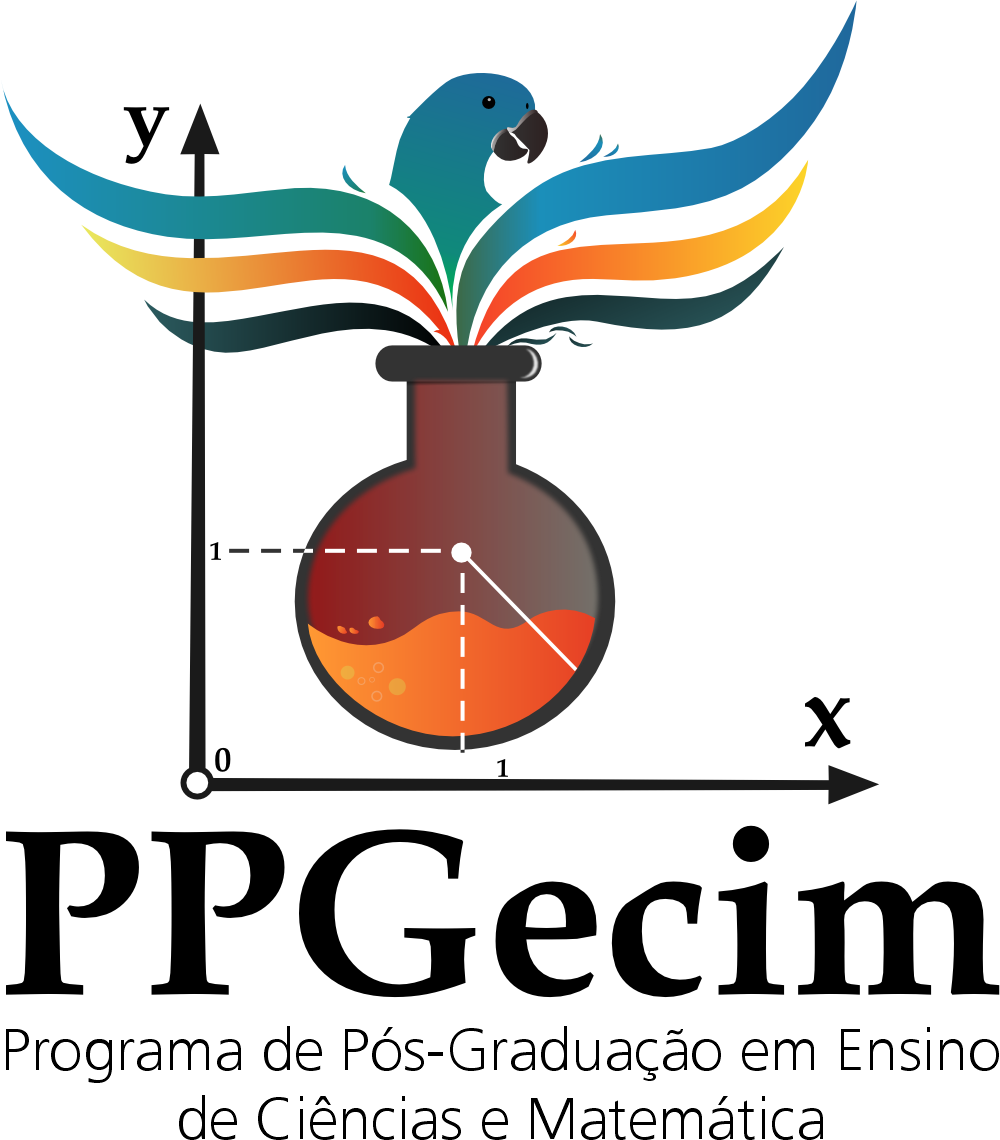AÇAÍ IN SCHOOL FOOD: PRELIMINARY NOTES IN THE MUNICIPALITY OF IGARAPÉ-MIRI-PA
DOI:
https://doi.org/10.20873/riecim.v3i1.16813Keywords:
Science teaching, Acai fruit, School foodAbstract
The present research sought to verify the appreciation of the açaí fruit in the school environment, as well as if those who work with the manipulation of the fruit are aware of the importance of adopting good hygiene practices. As it is a perishable food, poor handling practices can accelerate the degradation and proliferation of contaminants in the juice (NOGUEIRA; FIGUEIREDO; MULLER, 2005). The information collected took place from May 13 to June 30, 2019, in the city of Igarapé-Miri - Pará, with school managers, açaí handlers, points of sale of the fruit and sectors of the Municipal Department of Education. The instruments and research techniques used were: interviews, questionnaire and systematic observations. The results demonstrate: a) The concern of pickers regarding the hygiene procedure and the lack of materials to carry out quality work in the açaí groves, b) information from the Secretary of Education revealed that of the 111 municipal schools, the 16 urban teaching units are the most benefited from the açaí distributed by the secretariat. The results also point out that 25% of urban managers bought açaí for the school at points of sale on their own. Based on the above, we can conclude that the açaí offered to students of public education institutions involves numerous individuals, who, like managers and coordinators, have the responsibility to ensure the health of the students.
References
AGUIAR, Amália Gabriela Rocha. Manejo de população de açaizeiro (Euterpe oleracea Mart.) em parcelas de produção de frutos em área de várzea. 2016. 95 f. Dissertação (Mestrado) – Programa de Pós-Graduação em Agriculturas Amazônicas, Universidade Federal do Pará, Belém, 2016.
BEZERRA, Valeria Saldanha. Planejando uma Batedeira de Açaí, Empresa Brasileira de Pesquisa Agropecuária- Embrapa, Amapá, 2011, 39 p. Disponível em: https://www.infoteca.cnptia.embrapa.br/handle/doc/939272. Acesso em: 03 mar. 2019.
BRASIL. Tribunal de Contas da União. Cartilha para conselheiros do Programa
Nacional de Alimentação Escolar (PNAE). 5. Ed. -- Brasília: TCU, 2010.
BRASIL. Resolução FNDE Nº 26, de 17 de junho de 2013. Dispõe sobre o “atendimento da alimentação escolar aos alunos da educação básica no âmbito do Programa Nacional de
Alimentação Escolar – PNAE”. Diário Oficial da República Federativa do Brasil,
Brasília, DF, 18 jun. 2013. Disponível em: https://extranet.who.int/nutrition/gina/en/node/43608. Acesso em: 23 jun. 2023.
CEDRIM, Paula Cavalcante Amélio Silva; BARROS, Elenita Marinho Albuquerque; NASCIMENTO, Ticiano Gomes do. Propriedades antioxidantes do açaí (Euterpe oleracea) na síndrome metabólica Braz. J. Food Technol., Campinas, v. 21, e 2017092, 2018. Disponível em: https://www.scielo.br/j/bjft/a/3SgqmCfbZcVrvzKCkrqBq5n/abstract/?lang=pt. Acesso em: 23 mar. 2019.
FIGUEIREDO, Rita Vieira de. Açaí passado: abordagem transdisciplinar de caracterização da bebida açaí (Euterpe oleracea Mart.) post fermentação espontânea. 2014. 141f. Dissertação (Mestrado em Ciência e Tecnologia de Alimentos) – Programa de Pós-Graduação em Ciência e Tecnologia de Alimentos, Universidade Federal de Viçosa, Minas Gerais, 2014.
IBGE, Instituto Brasileiro de Geografia e Estatística. Safra de açaí foi de 1,1 milhão de toneladas em 2016. 2017 Eduardo Peret - Editoria: Estatísticas Econômicas. Disponível em: https://censos.ibge.gov.br/2012-agencia-de-noticias/noticias/16821-safra-de-acai-foi-de-1-1-milhao-de-toneladas-em-2016.html#:~:text=Segundo%20a%20Pesquisa%20Agr%C3%ADcola%20Municipal,a%C3%A7a%C3%AD%20no%20%C3%A2mbito%20da%20agricultura. Acesso em: 20 mar.2019.
IBGE, Instituto Brasileiro de Geografia e Estatística. Panorama de Igarapé-Miri.2017. Disponível em: https://cidades.ibge.gov.br/brasil/pa/igarape-miri/panorama Acesso em; 23 mai. 2019.
IGARAPÉ-MIRI, Resumo de matriculas: ano letivo 2015 - 2019, Secretaria municipal de Educação, igarapé- Miri- Pa, 2019.
LOBO; Ana Carolina Martini; VELASQUE, Leandra Fiori Lopes. Revisão de literatura sobre os efeitos terapêuticos do açaí e sua importância na alimentação. Biosaúde, Londrina, v. 18, n. 2, 2016. Disponível em: https://www.uel.br/revistas/uel/index.php/biosaude/article/view/27624. Acesso em: 23 mar. 2019.
MARCONI, Mariana de Andrade; LAKATOS, Eva Maria. Fundamentos de metodologia científica. 5º edição. São Paulo: Atlas, 2003.
NOGUEIRA, Oscar Lameira et al. A cultura do açaí. Brasília: EMBRAPA Serviço de Produção de Informação, 1995. 50p. (Coleção Plantar, 26).
NOGUEIRA, Oscar Lameira, FIGUEIRÊDO; Francisco José Câmara; MULLER, Antônio Agostinho. Açaí. Embrapa Amazônia Oriental. Belém, Pará. 137p. (Sistemas de Produção, 4). 2005.
OLIVEIRA, Maria do Socorro Padilha de et al. AÇAÍ, Euterpe oleracea. Instituto Interamericano de Cooperación para la Agricultura (IICA). PROCISUR. 2017.
PEIXOTO, Jacqueline Carvalho. Desenvolvimento de bebida energética funcional à base de açaí liofilizado para o controle do estresse muscular e oxidativo e atenuação de indicadores cardiorrespiratórios e de percepção do esforço em atletas, 2014. 214f. Tese (Doutorado em Ciências Farmacêuticas) – Programa de Pós-Graduação em Ciências Farmacêuticas, Universidade Federal do Rio de Janeiro, Rio de Janeiro. 2014.
PEREIRA, Alex Darlan Rafael; MARTINELLI, Felipe. Abordagem aos pontos comerciais de Açaí na cidade de Paragominas sob aspectos Higiênicos Sanitários. 2015.58 f. Trabalho de Conclusão de Curso (Bacharelado em Engenharia Agronômica) – Universidade Federal Rural da Amazônia - UFRA, Paragominas - PA, 2015.
RIBEIRO, Fabricio Ribeiro. História e memoria: leituras sobre o trabalho com açaí e suas transformações- 2016. 236 f. Dissertação (Mestrado)- Programa de Pós-Graduação em História Social da Amazônia, Universidade do Pará, Belém, 2016.
TAGORE, Márcia de Pádua Bastos. O aumento da demanda do açaí e as alterações sociais, ambientais e econômicas: o caso das várzeas de Abaetetuba, Pará. 2017. 155f. Dissertação (Mestrado) - Universidade Federal do Pará, Núcleo de Meio Ambiente, Programa de Pós Graduação em Gestão de Recursos Naturais e Desenvolvimento Local na Amazônia, Belém, 2017.
VINHARES, Márcio; DIAS, João Carlos. Doença de Chagas no Brasil. Cad. Saúde Pública, Rio de Janeiro, 16(Sup. 2):7-12, 2000. Disponível em: https://www.scielosp.org/pdf/csp/2000.v16suppl2/S7-S12/pt. Acesso em: 12 nov. 2021.
Downloads
Published
How to Cite
Issue
Section
License
Copyright (c) 2023 Waldemar Borges de Oliveira Júnior, Michelli Pixuna Lima

This work is licensed under a Creative Commons Attribution-NonCommercial 4.0 International License.
Copyright Policy
Copyrights are retained by the authors, who grant RIEcim the exclusive rights for first publication. Authors will not be remunerated for the publication of their work in this journal. Authors are permitted to enter into separate, additional contractual arrangements for the non-exclusive distribution of the work's published version in this journal (e.g., post it to an institutional repository, on a personal website, publish a translation, or as a book chapter), with acknowledgement of authorship and initial publication in this journal. The Journal's editors have the right to make textual adjustments and adaptations to conform to publication standards.
Open Access Policy
This journal provides immediate open access to its content, following the principle that freely providing scientific knowledge to the public contributes to the global democratization of knowledge. Users can read, download, copy, distribute, print, search, or use the content for any legal purpose, respecting national copyright laws and without seeking prior permission from the publisher or the author. The opinions presented in the articles are the responsibility of the authors. The Journal does not charge Article Processing Charges (APCs).
Licensing Policy - Usage License
Licensed under the Creative Commons Attribution-NonCommercial 4.0 International (CC BY-NC 4.0) License. This license allows sharing, copying, redistributing the manuscripts published in RIEcim in any medium or format. Additionally, it allows adapting, remixing, transforming, and building upon the material, as long as proper credit is given to the author and initial publication in this journal is acknowledged.

































